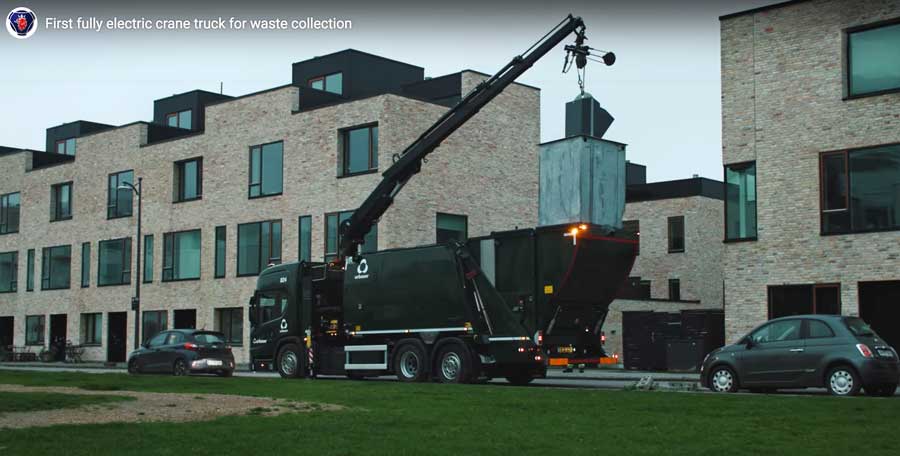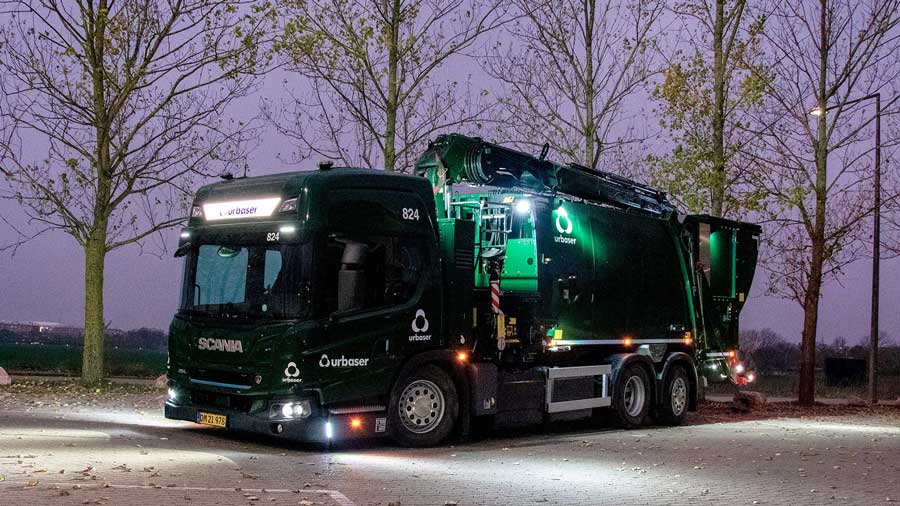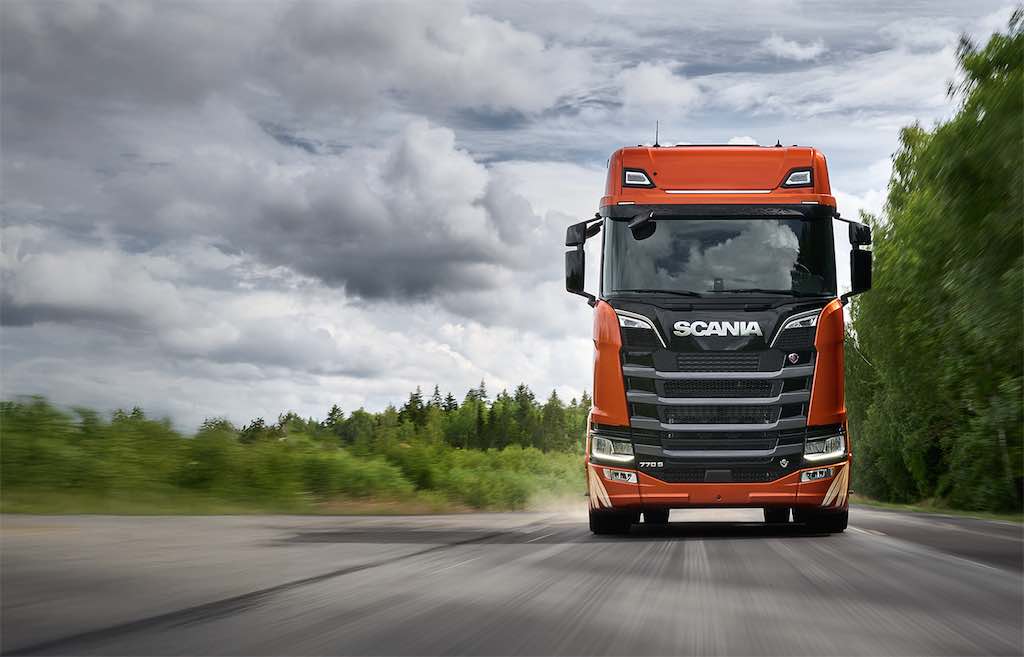Denmark’s first fully electric Scania 25L with combined crane and compactor construction for waste collection is now in use on the streets of Copenhagen, operated by global waste management company Urbaser. All the main components of the crane truck – chassis, crane and waste compactor – are electrically powered, and the crane can easily run for a full day on a single charge.
The all-electric crane truck’s main task is to empty underground waste containers, which are mainly located around streets and squares in the capital’s new districts of Nordhavn, Sydhavn and Amager. The districts’ waste collection process sees inhabitants sorting their waste into up to 10 separate bags and then disposing of it in the underground containers near their homes.
The waste is emptied with a crane and compacted
When the containers need to be emptied, the driver uses the electrically powered crane to lift the containers out of the concrete shaft in which they stand. The container is then swung over the truck’s electrically-driven waste compactor, after which the bottom of the container is opened so that the waste falls into the compactor, where it is compressed.
When the compactor is full of residual waste, the driver drives it to an incineration plant, where it is converted into energy and district heating. The other sorted waste such as paper, cardboard, metal, plastic is taken to various recycling companies in Greater Copenhagen.
40% battery capacity left by the end of the day
The first three months of operation with the all-electric Scania crane truck have shown that its total of nine battery packs with a gross capacity of 297 kWh have ample capacity for more than a full day’s driving. In fact, there is usually 40% battery capacity left by the end of the day, even though the batteries supply power for both the truck’s driving and for the hydraulic system on the compactor unit. The crane is a 24.5 t/m Fassi that runs on its own battery pack with electric power take-off and 86 kWh battery capacity, which is also enough for a full day’s operation.
Before the electric crane truck was put into operation, Scania Denmark, in collaboration with Urbaser, had carried out a simulation of the range of the routes for which the truck will be used. With electric trucks, it is important to adapt the operation to the daily driving distance, the operation of the crane and compactor, the geographic location of the charging infrastructure and the capacity in relation to the truck’s battery systems.

Drivers specially trained to drive electric truck
Before delivery of the crane truck, a small team of Urbaser’s drivers was trained on how best to drive a battery-electric truck, which differs somewhat from driving a traditional diesel truck. Among other things, it is about adapting accelerations and braking to the electric drive motor’s capacity to partly accelerate and partly collect the braking energy to send back to the batteries, where it is reused for new accelerations.
Details on the fully electric Scania 25L crane and compactor truck
Chassis: Scania 25L B6x2*4, 3-axle with forward and lowered L-cab and electrically steerable bogie axle behind the draw axle. Driveline with permanent-magnet electric machine with oil spray cooling, and max. engine output of 295 kW/2,300 Nm at peak load and 230 kW/1,300 Nm continuously. Wheelbase of 4,750 mm provides space for 9 lithium-ion batteries with a capacity of 297 kWh gross/213 kWh net, in order to maximise the life of the batteries. Charging socket of type CCS2 for charging with up to 130 kW v. 200 Amp. Max. charging time to full battery capacity is less than 100 min.
Structure: 24.5 t/m Fassi F245 crane supplied by Fassi Danmark and e-PTO of 64 kW power with associated battery pack of 86 kWh from Banke ApS in Sønderborg. The compactor unit is a Finnish-produced NTM KG with one chamber of 18 m3 supplied by Stiholt Hydraulic A/S in Aalborg.










